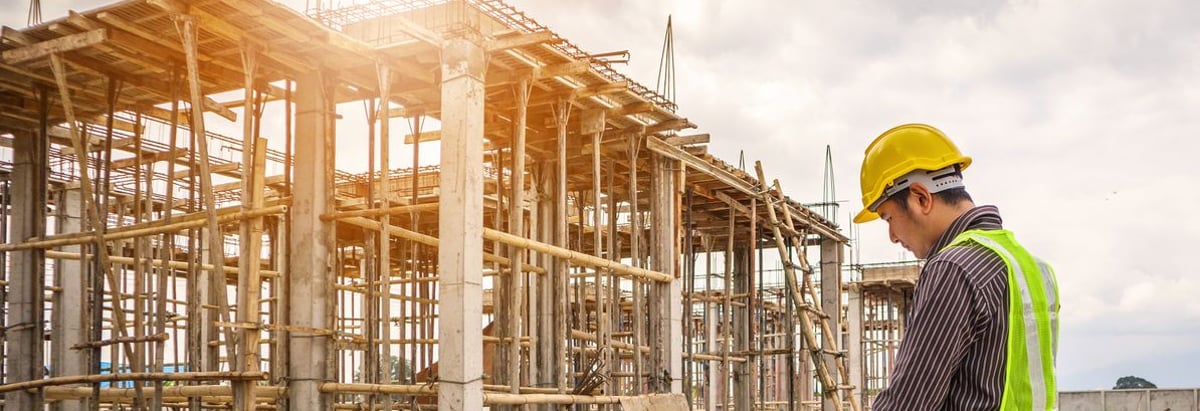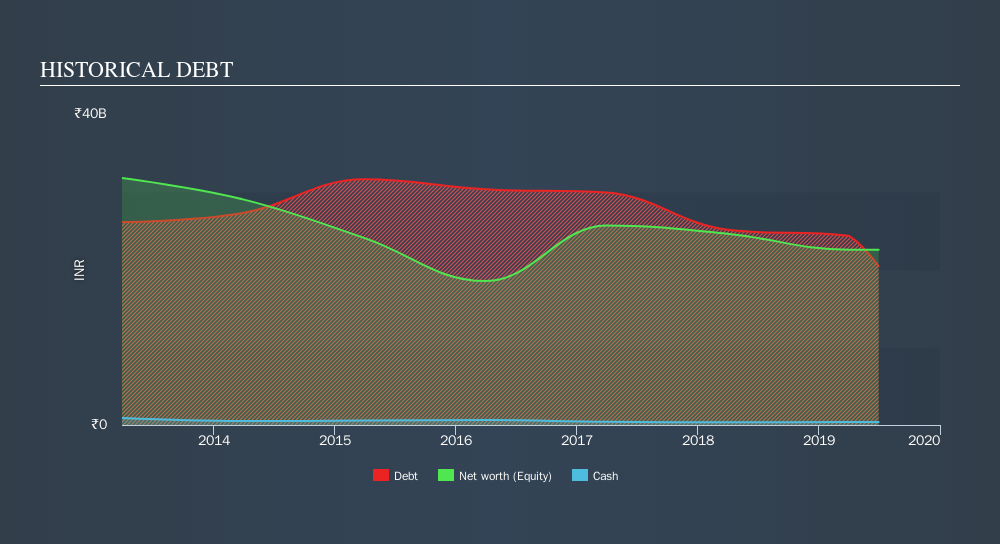
David Iben put it well when he said, 'Volatility is not a risk we care about. What we care about is avoiding the permanent loss of capital. So it might be obvious that you need to consider debt, when you think about how risky any given stock is, because too much debt can sink a company. As with many other companies SKIL Infrastructure Limited (NSE:SKIL) makes use of debt. But is this debt a concern to shareholders?
Why Does Debt Bring Risk?
Generally speaking, debt only becomes a real problem when a company can't easily pay it off, either by raising capital or with its own cash flow. Ultimately, if the company can't fulfill its legal obligations to repay debt, shareholders could walk away with nothing. However, a more common (but still painful) scenario is that it has to raise new equity capital at a low price, thus permanently diluting shareholders. Of course, plenty of companies use debt to fund growth, without any negative consequences. When we think about a company's use of debt, we first look at cash and debt together.
Check out our latest analysis for SKIL Infrastructure
What Is SKIL Infrastructure's Net Debt?
You can click the graphic below for the historical numbers, but it shows that SKIL Infrastructure had ₹20.4b of debt in March 2019, down from ₹25.1b, one year before. Net debt is about the same, since the it doesn't have much cash.

A Look At SKIL Infrastructure's Liabilities
Zooming in on the latest balance sheet data, we can see that SKIL Infrastructure had liabilities of ₹15.9b due within 12 months and liabilities of ₹20.1b due beyond that. Offsetting these obligations, it had cash of ₹373.3m as well as receivables valued at ₹6.93b due within 12 months. So its liabilities total ₹28.6b more than the combination of its cash and short-term receivables.
The deficiency here weighs heavily on the ₹1.26b company itself, as if a child were struggling under the weight of an enormous back-pack full of books, his sports gear, and a trumpet." So we definitely think shareholders need to watch this one closely. At the end of the day, SKIL Infrastructure would probably need a major re-capitalization if its creditors were to demand repayment.
In order to size up a company's debt relative to its earnings, we calculate its net debt divided by its earnings before interest, tax, depreciation, and amortization (EBITDA) and its earnings before interest and tax (EBIT) divided by its interest expense (its interest cover). This way, we consider both the absolute quantum of the debt, as well as the interest rates paid on it.
Weak interest cover of 0.069 times and a disturbingly high net debt to EBITDA ratio of 86.2 hit our confidence in SKIL Infrastructure like a one-two punch to the gut. The debt burden here is substantial. However, it should be some comfort for shareholders to recall that SKIL Infrastructure actually grew its EBIT by a hefty 115%, over the last 12 months. If it can keep walking that path it will be in a position to shed its debt with relative ease. The balance sheet is clearly the area to focus on when you are analysing debt. But it is SKIL Infrastructure's earnings that will influence how the balance sheet holds up in the future. So when considering debt, it's definitely worth looking at the earnings trend. Click here for an interactive snapshot.
Finally, a business needs free cash flow to pay off debt; accounting profits just don't cut it. So it's worth checking how much of that EBIT is backed by free cash flow. Over the last two years, SKIL Infrastructure saw substantial negative free cash flow, in total. While that may be a result of expenditure for growth, it does make the debt far more risky.
Our View
On the face of it, SKIL Infrastructure's conversion of EBIT to free cash flow left us tentative about the stock, and its level of total liabilities was no more enticing than the one empty restaurant on the busiest night of the year. But on the bright side, its EBIT growth rate is a good sign, and makes us more optimistic. Taking into account all the aforementioned factors, it looks like SKIL Infrastructure has too much debt. That sort of riskiness is ok for some, but it certainly doesn't float our boat. Even though SKIL Infrastructure lost money on the bottom line, its positive EBIT suggests the business itself has potential. So you might want to check outhow earnings have been trending over the last few years.
If you're interested in investing in businesses that can grow profits without the burden of debt, then check out this free list of growing businesses that have net cash on the balance sheet.
We aim to bring you long-term focused research analysis driven by fundamental data. Note that our analysis may not factor in the latest price-sensitive company announcements or qualitative material.
If you spot an error that warrants correction, please contact the editor at editorial-team@simplywallst.com. This article by Simply Wall St is general in nature. It does not constitute a recommendation to buy or sell any stock, and does not take account of your objectives, or your financial situation. Simply Wall St has no position in the stocks mentioned. Thank you for reading.
About NSEI:SKIL
SKIL Infrastructure
Engages in the infrastructure development business in India.
Moderate and good value.
Market Insights
Community Narratives




